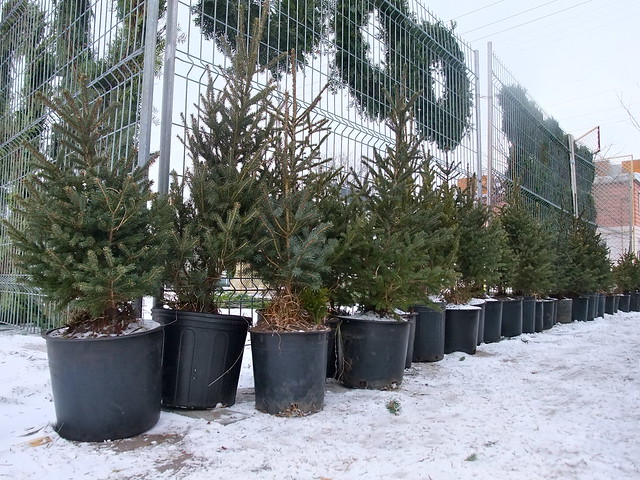
Every December the great debate sprouts up among environmentally conscious Christmas celebrators: Will it be a mono-cropped, aromatic tree this year? Or a reusable import from China?
The options aren’t so clear-cut.
A 2009 study conducted by a Montreal-based consulting company concluded that an artificial tree would have to be kept for over twenty years in order to have a lesser impact onclimate change than real trees.
Artificial trees with the average six-year life span have three times the impact on climate change and resource depletion than real trees. Natural trees produce 40 per cent less carbon emissions than their artificial counterpart and have the added benefit of sequestering CO2 during their eight to ten year growth period.
The materials used in artificial trees take a toll on the environment. The needles are usually made with polyvinyl chloride (PVC), a petroleum-derived plastic that contains 2-5% lead, though this is increasingly being replaced by tin. Artificial trees are usually non-recyclable.
On the other hand, some critics argue that chopping down millions of trees each year for a one-day celebration has harmful affects on the land. The Montreal study found that artificial trees are four times better on local ecosystems than natural trees. Yet, the authors point out that many Christmas tree plantations are located on land that wouldn’t otherwise be used, such as the land beneath power lines.
Despite the debates, Christmas tree business is big in Canada. There are 725 Christmas tree farms in Ontario alone. Artificial trees imported to Canada in 2009 valued at $39.6 million, according to Statistics Canada’s annual Christmas tree report. Of that value, 96% came from imports from China.
Canada, in turn, exported 1.7 million trees in 2009. The trees went mainly to the United States, but some travelled to countries as far away as Venezuela.
Christmas trees are clearly not disappearing from many Canadians December traditions anytime soon, but there are eco-friendly alternatives.
Last year, a Vancouver business drew national attention with its rentable-tree idea. The full-size, potted trees are delivered directly to the customers’ home and then picked up after the holidays are over to be replanted until the following year. People can request to have the same tree year after year, allowing kids to grow as it does. A sustainable concept if the cost doesn’t deter you: A six foot Fraser Fir, one of the most popular Christmas tree species in Canada, will set you back $155.
Ottawa hasn’t seen anything like this yet, but a potted tree might be the next best thing. The Parkdale Market sells 1.5 – 2.5 foot potted trees for $5 – $20. Families who opt for sustainability over size can plant their trees outside when the ground begins to thaw in the spring.
If you choose a local cut-your-own tree instead, you can leave it on your curb to be recycled. The city of Ottawa grinds collected trees into mulch to tender off to soil-blending companies and to sell to residents.
(Parkdale Market is located on the corner of Wellington St W and Parkdale Ave. The family-run Christmas-tree operation is open everyday until Christmas eve.)
Heather Yundt is a Master of Journalism student at Carleton University. Heather completed her undergrad in Global Development at Queen’s University, during which she spent an academic year studying and interning with a local NGO in Ghana. Heather is fascinated by the challenges and innovation that arise from diverse groups of people struggling to assert control and identity in shared spaces.

3 comments
Totally awesome…problem solved….THANK YOU Spacing!
I have been buying these potted trees for a couple of years now. I just not have had any success in maintaining them until spring to plant somewhere in Hintonburg where I live.
Any advice on that would be appreciated….
Happy Holidays everyone!!!
There are good reasons why conifers are not used as houseplants – there just isn’t enough light indoors for them, and the warm, dry indoor conditions can be harsh on a plant that should be sleeping. To help your potted conifer survive till spring, put it in the coldest spot in you home and make sure it does not dry out, neither overwater or the roots will rot.